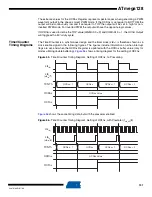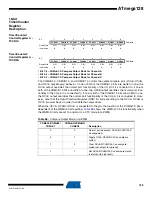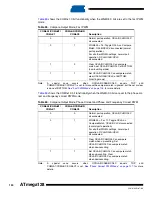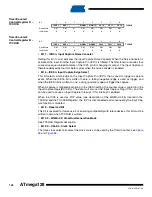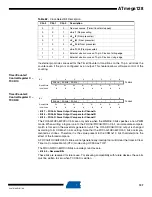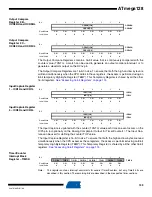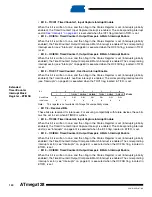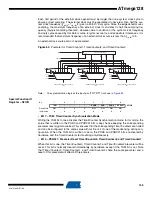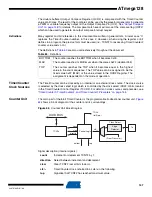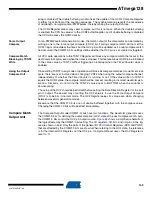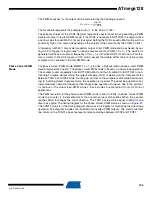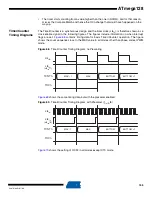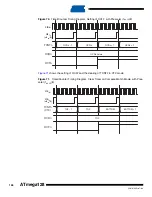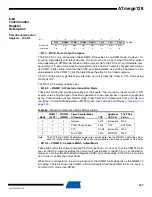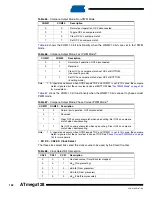
144
2467S–AVR–07/09
ATmega128
Timer/Counter3,
Timer/Counter2,
and
Timer/Counter1
Prescalers
Timer/Counter3, Timer/Counter1, and Timer/Counter2 share the same prescaler module, but
the Timer/Counters can have different prescaler settings. The description below applies to all of
the mentioned Timer/Counters.
Internal Clock Source
The Timer/Counter can be clocked directly by the System Clock (by setting the CSn2:0 = 1).
This provides the fastest operation, with a maximum Timer/Counter clock frequency equal to
system clock frequency (f
CLK_I/O
). Alternatively, one of four taps from the prescaler can be used
as a clock source. The prescaled clock has a frequency of either f
CLK_I/O
/8, f
CLK_I/O
/64,
f
CLK_I/O
/256, or f
CLK_I/O
/1024.
Prescaler Reset
The prescaler is free running, i.e., operates independently of the clock select logic of the
Timer/Counter, and it is shared by Timer/Counter1, Timer/Counter2, and Timer/Counter3. Since
the prescaler is not affected by the Timer/Counter’s clock select, the state of the prescaler will
have implications for situations where a prescaled clock is used. One example of prescaling arti-
facts occurs when the timer is enabled and clocked by the prescaler (6 > CSn2:0 > 1). The
number of system clock cycles from when the timer is enabled to the first count occurs can be
from 1 to N+1 system clock cycles, where N equals the prescaler divisor (8, 64, 256, or 1024).
It is possible to use the Prescaler Reset for synchronizing the Timer/Counter to program execu-
tion. However, care must be taken if the other Timer/Counter that shares the same prescaler
also use prescaling. A Prescaler Reset will affect the prescaler period for all Timer/Counters it is
connected to.
External Clock Source
An external clock source applied to the Tn pin can be used as Timer/Counter clock
(clk
T1
/clk
T2
/clk
T3
). The Tn pin is sampled once every system clock cycle by the pin synchroniza-
tion logic. The synchronized (sampled) signal is then passed through the edge detector.
shows a functional equivalent block diagram of the Tn synchronization and edge detector
logic. The registers are clocked at the positive edge of the internal system clock (
clk
I/O
). The latch
is transparent in the high period of the internal system clock.
The edge detector generates one clk
T1
/clk
T
2
/clk
T
3
pulse for each positive (CSn2:0 = 7) or nega-
tive (CSn2:0 = 6) edge it detects.
Figure 59.
Tn Pin Sampling
The synchronization and edge detector logic introduces a delay of 2.5 to 3.5 system clock cycles
from an edge has been applied to the Tn pin to the counter is updated.
Enabling and disabling of the clock input must be done when Tn has been stable for at least one
system clock cycle, otherwise it is a risk that a false Timer/Counter clock pulse is generated.
Tn_sync
(To Clock
Select Logic)
Edge Detector
Synchronization
D
Q
D
Q
LE
D
Q
Tn
clk
I/O


